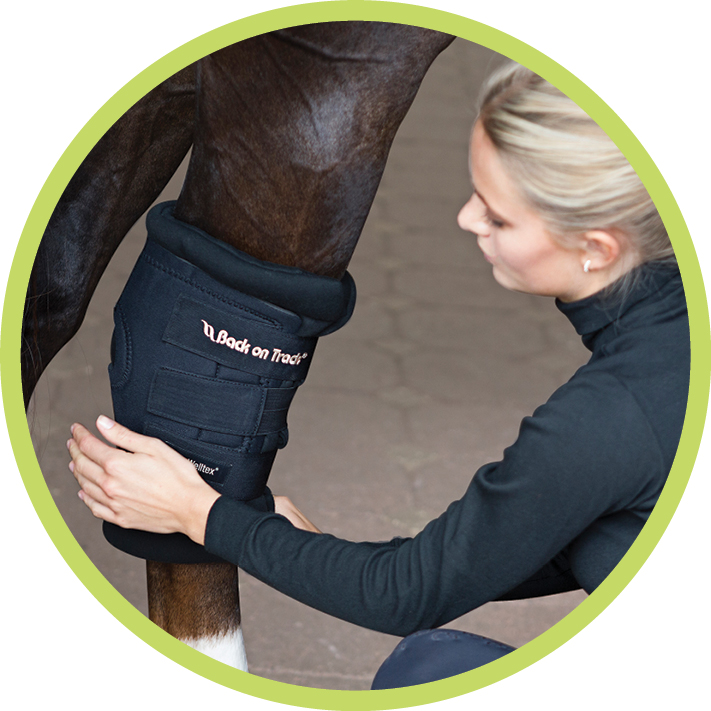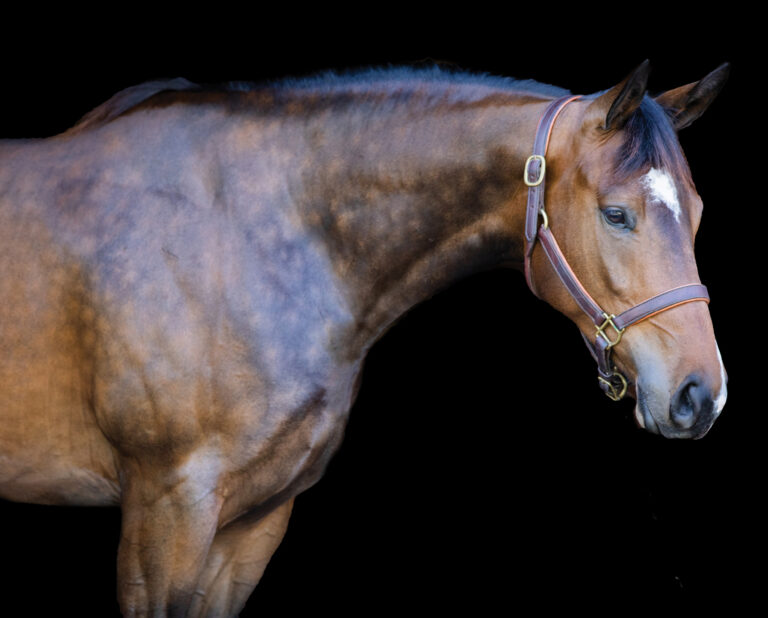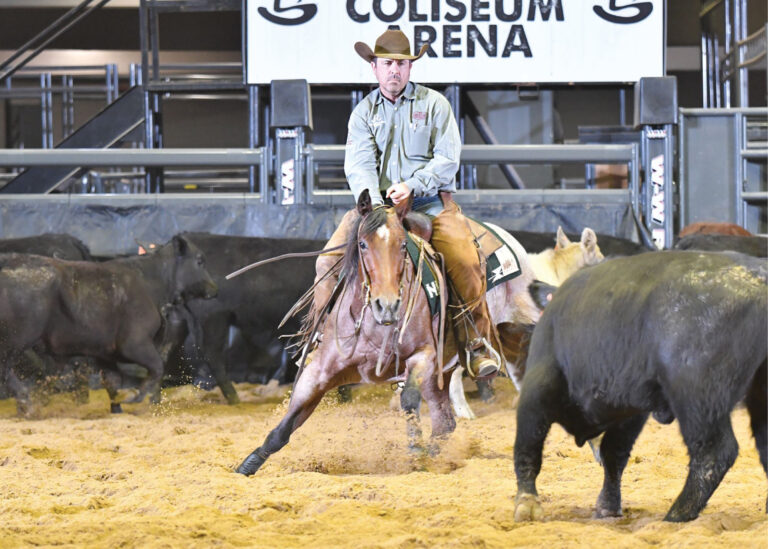
Hock Fusion
Fusion of the two lower joints of a horse’s hock can be a remedy for moderate to severe osteoarthritis (where arthritic changes have damaged the cartilage such that bone-on-bone contact is causing the horse pain). Fusion occurs when the juncture between the ends of two bones transforms from a mobile joint into a stable bony bridge, immobilizing that part of the hock. The joints in the lower hock naturally have minimal movement, which means their fusion can potentially relieve pain without inhibiting the horse’s stride. Fusion sometimes occurs naturally, but more often is the result of a surgical or chemical process (see box). If your horse suffers from hock arthritis, consult your veterinarian about options.
[ALSO: EQUINE JOINT SUPPLEMENT GUIDE]

A Boot of Support
Therapeutic hock boots (as above, from Back on Track) with neoprene exterior and Welltex inner lining reflect your horse’s natural body heat to create soothing warmth that helps ease pain.
How Hock Fusion Can Occur
Natural Fusion
Sometimes in the face of arthritic changes causing pain, natural forces will begin to fuse the joints in question. It can be a lengthy process, however, and until 100% complete, the horse will be in pain.
Alcohol Fusion
Ethyl alcohol injected into the affected joint destroys the cartilage lining, thereby promoting arthrodesis, or fusion of the joint. The procedure is done with local anesthesia on a standing, sedated horse. Complete fusion may require up to a year, and though the alcohol may result in a temporary pain-blocking effect, pain management
will likely be required in the interim.
Surgical Fusion
A surgeon drills away the cartilage lining the joint, exposing the bone and promoting arthrodesis. This procedure is performed with the horse under general anesthesia. Complete fusion, again, may take up to a year and pain management will be required.
[RELATED: READING EQUINE RADIOGRAPHS]







